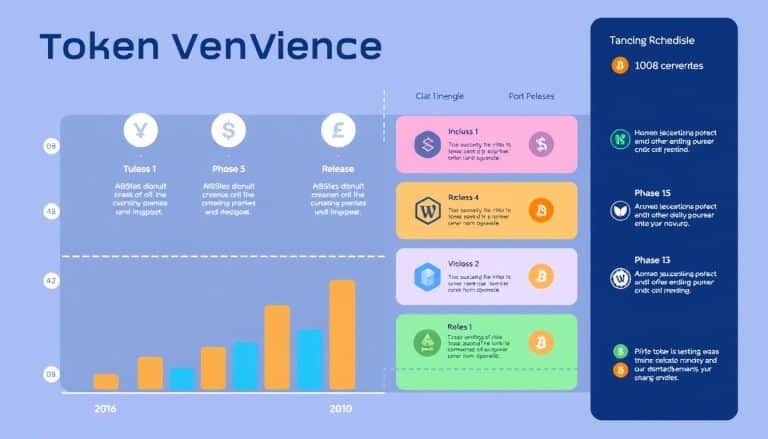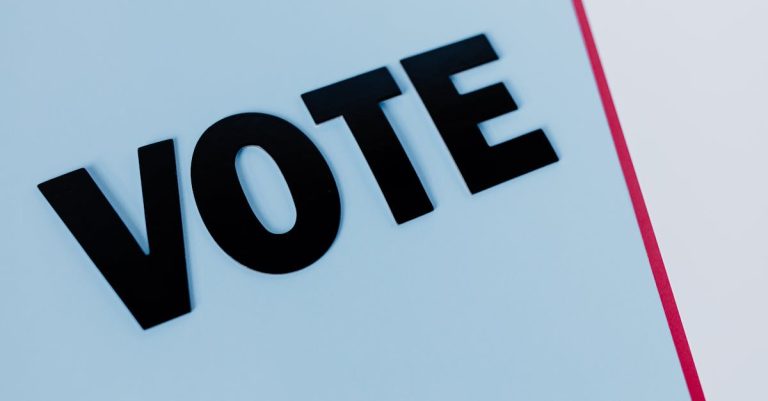Xrp Adoption In Banking
Ripple is a distributed ledger technology based on blockchain principles. It enables real-time, low-cost international payments through its cryptocurrency, XRP. Banks are increasingly exploring the potential of Ripple and XRP for their digital transformation strategies due to numerous advantages presented by these technologies. This article examines the current adoption of XRP in banking and its potential impact on global finance. In particular, it looks at the advantages of using XRP, regulatory environment considerations, existing challenges as well as future prospects for adoption in banking.
Overview of Ripple and XRP
Ripple, the company behind XRP, has seen overwhelming growth since its conception in 2012, with over 300 different financial institutions currently using its products. Ripple’s payment protocols and crypto-security solutions provide a fast, secure way for banks and other financial services companies to send money around the world. Its digital wallets offer users an easy way to store and transfer XRP tokens securely. Through the use of Ripple’s technology, banking customers can benefit from faster transaction times than those offered by traditional banking institutions while also enjoying increased security measures such as multi-signature access control and cryptographic auditing. This provides a compelling argument for why banks should consider adopting XRP for their international payments needs. By leveraging Ripple’s blockchain-based solutions, banks have access to a secure platform with low fees that can be used to facilitate cross-border transactions quickly and efficiently. As more banks are beginning to recognize these advantages of XRP adoption, it is likely that its usage will continue to grow in the coming years.
Advantages of XRP
The implementation of the distributed ledger technology associated with Ripple has enabled a number of advantages in the financial services industry. The primary advantage is cost efficiency. Transactions that are facilitated by XRP have been known to be faster and cheaper than what traditional payment systems offer. This allows for quicker and more affordable cross-border payments, helping banks save money on transaction fees. In addition, Ripple’s blockchain-based platform eliminates the need for multiple intermediaries which further reduces costs related to international payments.
Improved security is another major benefit of using XRP. By leveraging blockchain technology, it ensures that all digital assets stored in a ledger remain secure from fraud and malicious activities. The process also involves cryptographically signing each transaction which further adds an extra layer of security and helps reduce the risk of data breaches or manipulation. As such, Ripple offers improved security compared to traditional payment networks which makes it an attractive option for banks to consider when protecting their customers’ funds and financial information. These advantages have led to increased xrp adoption by banks looking to reduce costs and improve their security measures.
XRP Adoption by Banks
As a result of its cost efficiency, security measures and streamlined transactions, financial institutions have increasingly been turning to distributed ledger technology for improved digital asset management. Ripple’s XRP is particularly popular among banks, as it provides an alternative to the traditional methods of making cross-border payments. The decentralized and trustless nature of XRP eliminates the need for centralized third party intermediaries such as correspondent banks, which increases transaction speed and reduces costs. At the same time, the use of XRP enables organizations to ensure that their assets are secure from malicious actors due to its advanced cryptographic algorithms and consensus-based verification process. As a result, the adoption of XRP by banks has become increasingly widespread in recent years as they recognize its potential for revolutionizing cross-border payments. With this increased adoption comes new opportunities for digital transformation within banking institutions that could ultimately lead to greater efficiency and customer satisfaction.
Role of XRP in Digital Transformation
Rapidly increasing utilization of distributed ledger technology has enabled financial institutions to explore digital transformation opportunities, with XRP emerging as a prominent factor in this. For example, research suggests that banks using XRP have achieved up to 40% faster transaction speeds and 60% lower costs compared to traditional methods. Additionally, the XRP infrastructure provides access to faster liquidity management for international payments across multiple currencies. This allows for more efficient capital movement between bank accounts which can be performed almost instantly rather than waiting days or even weeks for transactions to settle. As such, the use of XRP has emerged as an important tool in modern day digital transformation efforts and its adoption is likely to continue growing among banking institutions around the world.
Potential Impact on Global Finance
With its ability to facilitate faster, more cost-effective cross-border payments, XRP has the potential to revolutionize global finance and usher in a new era of financial inclusion. As such, banks and other financial institutions are increasingly exploring how they could integrate XRP into their existing infrastructure. Tech integration is key for successful adoption of XRP as it needs to be seamlessly incorporated with existing systems without compromising on security or speed. Moreover, financial security must also be ensured when introducing a new technology like XRP into traditional banking systems and processes. Even though there are certain challenges associated with this process, the potential benefits provided by faster, cheaper transactions make it an attractive proposition for those looking to increase efficiency in global finance. As a result, further exploration into the use of XRP within the banking system is likely to occur in order to achieve these goals. This transition allows us to explore the various challenges associated with adopting XRP as a form of payment system.
Challenges of XRP Adoption
The integration of a new technology into traditional banking systems and processes requires careful consideration with regard to financial security and operational efficiency. XRP adoption in banking is no different and comes with its own unique set of challenges. Chief among these are cost implications related to implementation, as well as security concerns associated with storing customer data on distributed ledgers. Banks must ensure that the long-term benefits of utilizing this new technology outweigh any budgetary or systemic risks. Additionally, banks must determine if they have the resources required to adequately monitor and protect their customers’ data when using XRP-based services.
Ultimately, it is important for banks to analyze all potential costs and risks before making the decision to adopt XRP technology within their operations. As such, understanding the regulatory environment surrounding cryptocurrency use will be essential for many institutions looking to leverage this emerging payment method.
Regulatory Environment
The challenges faced by XRP adoption in banking are varied and complex. One such challenge is the regulatory environment, which can be a major hurdle for banks considering implementing XRP technology into their systems. While decentralized digital assets have the potential to provide cost savings through increased efficiency and speed of transaction settlement, they are subject to centralized regulation and compliance costs due to their decentralized nature. This means that any bank looking to adopt XRP technologies must first ensure they meet all applicable regulations.
Furthermore, the process of meeting these regulations can often be costly and time consuming, making it difficult for smaller banks or startups to take advantage of the benefits provided by this technology. In addition, there is still a lack of clarity regarding certain aspects of cryptocurrency regulation across different jurisdictions, introducing further complexity and uncertainty into the regulatory landscape. Despite these challenges, there has been an increasing amount of progress towards creating a more regulated environment around cryptocurrency technologies over recent years. As this progresses, it will become easier for banks to understand how best to utilize XRP technologies while staying compliant with relevant regulations; thus paving the way for greater adoption in banking in the future.
Future of XRP Adoption in Banking
As cryptocurrency technologies become more widely accepted, the future of their implementation in banking is becoming increasingly apparent. XRP is a digital asset that has demonstrated its potential to revolutionize the way banks process cross-border payments. Its blockchain technology provides a secure environment for financial transactions, and its scalability makes it an attractive option for many banking institutions.
| The adoption of XRP by banking institutions could lead to faster, more efficient cross-border payments, allowing banks to save costs while improving customer service. Furthermore, the increased security provided by the blockchain will reduce fraud and theft from malicious actors. This could have a significant impact on global markets as it would make financial transactions much safer and easier for both businesses and consumers alike. | Advantages | Disadvantages | Uncertainties |
|---|---|---|---|
| Faster Payments | High Volatility | Regulatory Framework | |
| Secure Transactions | Low Liquidity | Scalability Concerns | |
| Cost Savings | Environmental Impact | Uptake Rate |
Frequently Asked Questions
What are the risks associated with XRP adoption in banking?
The rapid growth of financial technology has raised concerns about potential risks, such as regulatory oversight and liquidity issues. Like a ship in a stormy sea, navigating the ever-changing landscape requires careful navigation to ensure successful outcomes. The need for caution is especially true when considering XRP adoption in banking.
How will XRP adoption affect the current banking environment?
The introduction of cost efficiency and scalability benefits into the banking environment will likely result in significant changes. Automation, increased accessibility, and improved security are some potential outcomes that can be expected from such a shift.
Are there any special security measures taken to protect XRP transactions?
The use of cryptographic standards in transactions is an important factor when considering transaction safety. XRP is no exception, as it employs the latest security measures to ensure secure and reliable transactions. These measures are designed to help protect users from malicious attacks and cybercrime threats.
What are the differences between Ripple and XRP?
Ripple and XRP are distinct entities: Ripple is a technology company, while XRP is a digital asset. Transaction speed and scalability benefits make XRP attractive for financial institutions, as it allows for faster transactions than traditional methods. This contributes to its growing adoption in banking.
How can customers benefit from XRP adoption in banking?
One interesting statistic is that RippleNet, the network of financial institutions using XRP, has grown to over 200 members since its launch in 2012. Customers can benefit from XRP adoption in banking by enjoying cost savings and speed advantages compared to legacy payment rails. Transactions are settled quickly with greater transparency and security than traditional methods.





 Bitcoin
Bitcoin  Ethereum
Ethereum  XRP
XRP  Tether
Tether  Solana
Solana  USDC
USDC  Dogecoin
Dogecoin  TRON
TRON  Lido Staked Ether
Lido Staked Ether  Cardano
Cardano  Hyperliquid
Hyperliquid  Stellar
Stellar  Wrapped Bitcoin
Wrapped Bitcoin  Sui
Sui  Wrapped stETH
Wrapped stETH  Chainlink
Chainlink  Hedera
Hedera  Bitcoin Cash
Bitcoin Cash  Avalanche
Avalanche  LEO Token
LEO Token  Wrapped eETH
Wrapped eETH  Shiba Inu
Shiba Inu  WETH
WETH  Toncoin
Toncoin  Litecoin
Litecoin  USDS
USDS  WhiteBIT Coin
WhiteBIT Coin  Monero
Monero  Polkadot
Polkadot  Binance Bridged USDT (BNB Smart Chain)
Binance Bridged USDT (BNB Smart Chain)  Coinbase Wrapped BTC
Coinbase Wrapped BTC  Pepe
Pepe  Ethena USDe
Ethena USDe  Uniswap
Uniswap  Bitget Token
Bitget Token  Aave
Aave  Bittensor
Bittensor  Dai
Dai  Pi Network
Pi Network  Aptos
Aptos  Cronos
Cronos  NEAR Protocol
NEAR Protocol  Ethena Staked USDe
Ethena Staked USDe  Internet Computer
Internet Computer  OKB
OKB  Ondo
Ondo  Jito Staked SOL
Jito Staked SOL  Ethereum Classic
Ethereum Classic  BlackRock USD Institutional Digital Liquidity Fund
BlackRock USD Institutional Digital Liquidity Fund